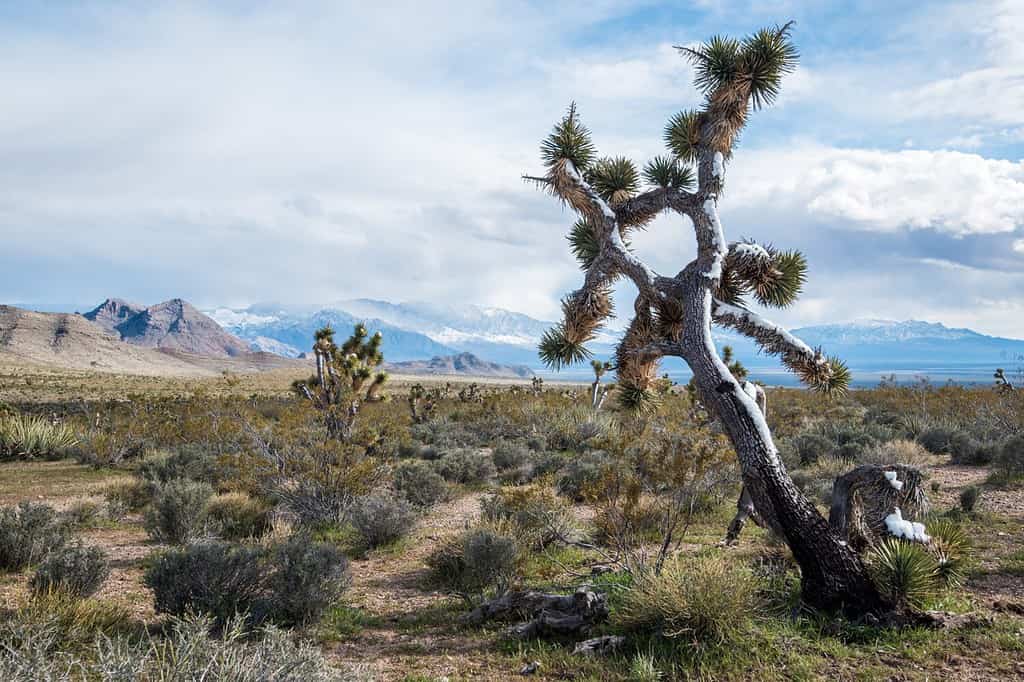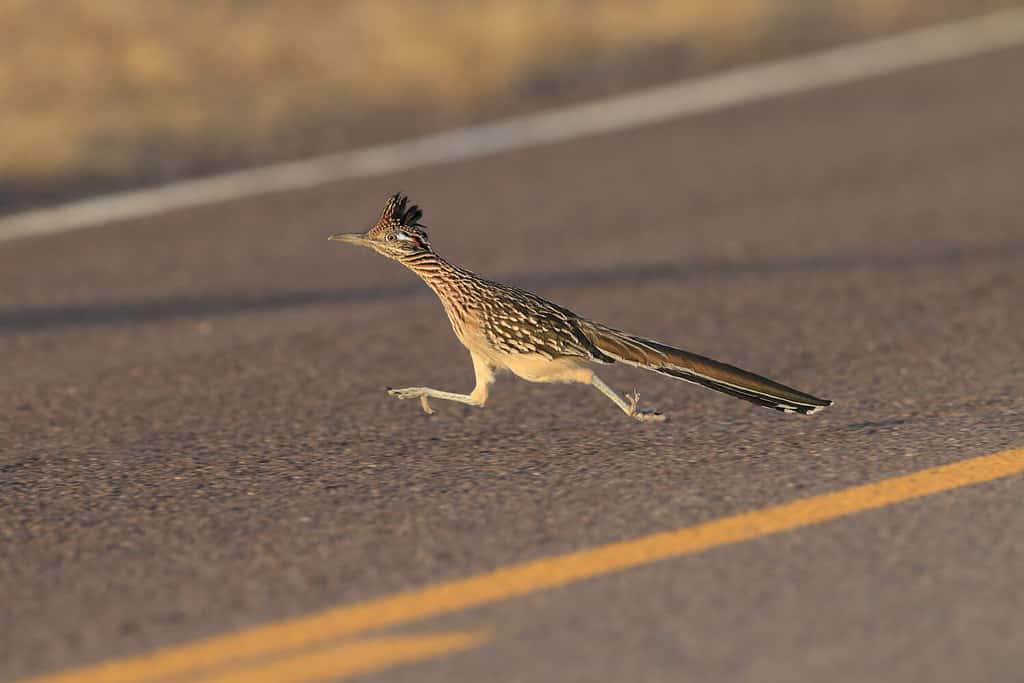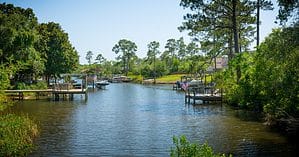Anyone that has spent some time in Las Vegas during summer can tell you that Nevada is a very hot state. Aside from heat, Nevada is also bone dry, the driest state in the entire U.S. Hot, dry areas are perfect for setting temperature records, and Nevada has done just that with a record set less than three decades ago. Discover the hottest temperature ever recorded in Nevada and see where this record occurred and what animals live in this exceptionally warm area.
Nevada’s Climate Type

Much of Nevada experiences an arid climate.
©Layne V. Naylor/Shutterstock.com
Before we talk about the face-melting record temperature to strike Nevada, we have to know a little about its climate. Why does this state get so hot? For one thing, the state is in the right spot.
The Sierra Nevada Mountains and the Rocky Mountains prevent the state from getting much moisture in the region. The state gets about 10.3 inches of precipitation per year on average. Dry air is crucial to setting record temperatures.
Large parts of the state are a part of the cold semi-arid (BSk) classification of the Köppen-Geiger climate classification. Such areas are known for their cool winter temperatures, low precipitation, and blazing hot summers. Some parts of the state, including the hottest parts of Nevada, have a hot desert climate. (BWh). These regions have less precipitation and humidity and have incredibly hot summers.
Take a look at the average high temperatures in Las Vegas, one of the cities in the hot desert climate.
| Month | Average High Temperature |
|---|---|
| June | 102 °F |
| July | 107 °F |
| August | 104 °F |
| September | 96 °F |
Triple-digit temperatures are absolutely oppressive, regardless of if it’s a “dry heat” or not. Interestingly, Las Vegas is not the hottest place in Nevada. That dubious honor belongs to another city, the place where the all-time heat record was set.
Discover the Hottest Temperature Ever Recorded in Nevada

Laughlin is located along the Colorado River, with the desert stretching behind the city proper.
©Jacob Boomsma/Shutterstock.com
The hottest temperature ever recorded in Nevada was 125 °F, and this record was set in Laughlin on June 29, 1994. Nevada’s record is the third highest of any state record. Unlike most of the records that were set nearly a century ago during the Dust Bowl era, this one occurred in living memory.
The temperature came as a result of a powerful heatwave that struct the Southwest in June 1994. Nevada, Arizona, New Mexico, Texas, and Oklahoma all set their record-high temperature in the same week between June 27 and June 29.
Even though the city set a record for the hottest single day in the state, Laughlin is a popular resort town.
Where is Laughlin on a Map?
Laughlin is in Clark County, Nevada. That’s the same county as Las Vegas even though it is a full 90 miles south of that city. Laughlin is in the far south of Clark County, representing the very bottom tip of southern Nevada. The city has the Colorado River to its east, and the Davis Dam is just 2 miles upriver from this city. Laughlin stretches across the entire southern part of the state, so it is right along the border with Arizona to the east and California to the west.
The city is nestled in a mountainous area that contributes to the region’s arid climate and heat. In short, even though it’s in the midst of a desert, Laughlin’s geography and geology help it get even hotter than other places in the Mojave Desert.
Wildlife Where the Hottest Temperature Ever Recorded in Nevada Happened

You might be able to spot a roadrunner in the Laughlin area.
©Frank Fichtmueller/Shutterstock.com
The city of Laughlin is in the middle of a desert. The Colorado River is to its east and mountains lie to its west. With the blazing heat of the area, it’s easy to imagine that nothing lives in this part of the country. That is far from the truth, though. Many animals live in the desert and the nearby river. Let’s start by listing some of the animals that live in the surrounding land, such as:
- Bighorn sheep
- Common chuckwalla
- Coyote
- Great roadrunner
- Great-tailed grackle
- House finch
- Kit fox
- Mojave Desert tortoise
- Mojave rattlesnake
- Mule deer
- White-tailed antelope squirrel
These animals are seen throughout the desert area, and they can travel nearby or into Laughlin.
The Colorado River below Davis Dam has many fish living in its waters. Some of the fish in the waters are:
- Redear sunfish
- Channel catfish
- Largemouth bass
- Smallmouth bass
- Rainbow trout
- Black crappie
Many other sorts of fish live throughout the run of the Colorado River. Just make sure that if you’re fishing in this area, you’re doing so legally. You’ll need a fishing license and to fish in designated spots to avoid encounters with law enforcement.
Comparing Nevada’s Record with the Hottest in the United States

The 125 °F record held by Laughlin, Nevada for the hottest temperature ever recorded in Nevada is only the third-hottest record. Two states are ahead of Nevada. They are California and Arizona. Arizona holds the second-place record with a temperature of 128 °F.
This temperature was set near Lake Havasu City on June 29, 1994, the same day as Nevada’s record. Meanwhile, Death Valley, California set the all-time record for the hottest day in America on July 10, 1913. On that date, the Greenland Ranch area of Death Valley reached a seemingly impossible 134 °F. No record has come close to the one set in California for over a century, and it may never happen again.
One of the main reasons that it may not happen again is that the record temperature may not have happened. Some experts believe that the person that read the instruments that day did not record the proper temperature and others think that the temperature on that day with the weather conditions was impossible. For now, though, the record stands.
The hottest temperature ever recorded in Nevada was blazing hot. Nevada has the third-hottest temperature recorded in a state since records on the subject have been kept. The temperature could one day edge higher in the right conditions, but it would require a powerful heatwave with little moisture in the air for such an event to happen again.
The photo featured at the top of this post is © A-Z-Animals.com/N/A
Thank you for reading! Have some feedback for us? Contact the AZ Animals editorial team.







